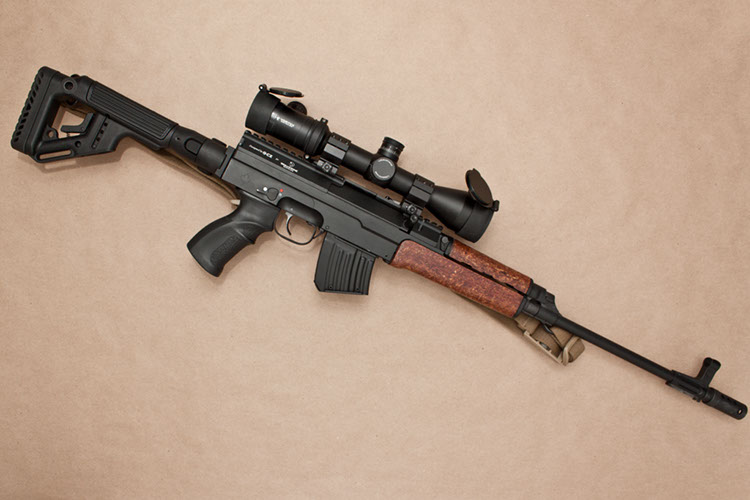
It has been just over a year since the RCMP kicked the hornets nest and re-classified the 858 rifle. Those with access to the FRT database sounded the alarm: things had changed, and changed drastically. What was once a non-restricted long gun became a prohibited converted-automatic on February 28th 2014. No one could say how many owners didn't know their rifle had changed. How many still might not know now? Canadian gun owners were enraged, and the gears of political action began to turn. A year on, we are still waiting for "the fix" Bill C-42 to come into full effect.
But Wolverine Supplies, the original importer of the 858, already has a fix ready to go. More than a fix, they have an improvement, an evolution, an honest effort to bring the Cold War era rifle into the 21st century.
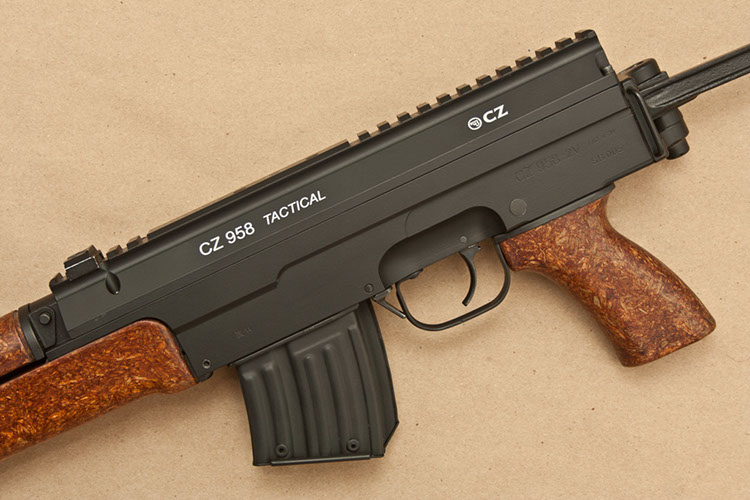
If you are not familiar with any of the 58 pattern rifles available in Canada, they all trace their origins back to the Sa.58 which was developed for the Czechoslovakian army during the Cold War. Rather than producing Kalashnivkovs like the other Warsaw Pact countries, Jiri Cermak designed an alternative. They'd use the same ammunition as the Russians, and at a glance they might look similar, but the Sa.58 was very different from the standard Kalashnikov. This new rifle was striker fired, had a last round bolt hold open, and could be fed from both magazines or stripper-clips.
Only about 900,000 rifles were made, and military production ceased in 1984. But the Czech Armed Forces still carry Sa.58 rifles, and put them to use fighting in Iraq alongside the Americans.
For Canadians, the 58 represents the perfect red rifle: affordable, non-restricted, accurate, and reliable. The CZ958 is the next step forward for the platform.

The biggest addition is a complete top rail that removes the old dust cover, ejection port, and rear sight block. Now, instead of a massive ejection port and exposed bolt, the 958 has a flattop optics rail and a more traditional ejection. The interior of the rail acts as an extra large brass deflector.
The second addition is a scalloped space around the trigger guard. This newly manufactured receiver has an improved finish, and is deeply narrowed around the trigger guard. This does improve the ergonomics for the shooter. Magazines are easier to remove, and your finger has a natural indexing point that is off the trigger. But it also serves a deeper purpose to make sure that the Cz958 can never suffer the same fate as the Cz858. We'll come back to that when we talk about classification.
The 958 weighs in at six pounds, eleven ounces in its factory configuration with an empty magazine. By the time we’d swapped out furniture and added optics, our tester was up to a little over nine and a half pounds. Using a trigger scale we found a consistent pull just over six pounds with a bit of creep to it. The rifle ships with a full 19 inch non-chrome-lined barrel. No restricted variants of the 958 are currently planned. The non-chromed barrel is both a blessing and a curse, as it theoretically produces better accuracy, but will require more detailed cleaning after shooting corrosive surplus ammunition. Wolverine has made it very clear that a chrome lined barrel isn't part of the initial offering, and could be several years off. Apparently the back-orders are quite deep in Czech Republic, and that additional process will certainly affect the retail price. Currently Wolverine is expecting the 958 to be under $1000, but likely higher than the original 858s, which at one point had a $600 price tag.
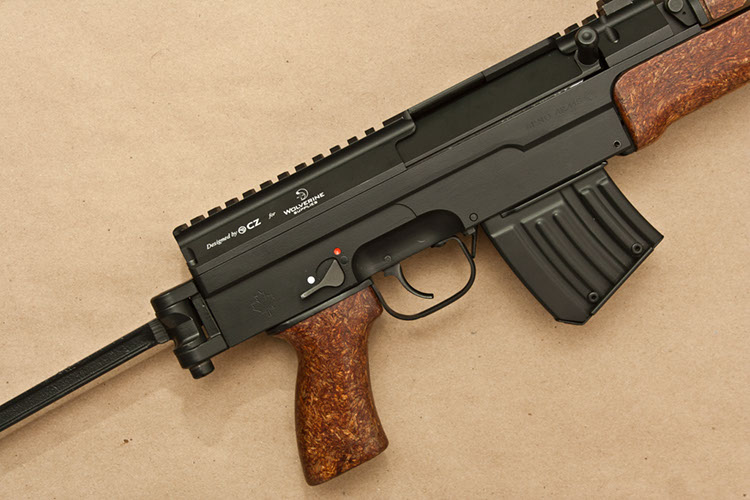
Contrary to what you might think, there are 7.62x39 loads appropriate for hunting. The regular steel core surplus is a military round of course and not legal to take game with. But Barnaul, Prvi Partisan, and Hornady all make soft nose or ballistic tip ammunition that would put down a deer. We tested some of them in course of our accuracy report.
If your intention is to mount optics, we cannot overstate how big a change the new optic rail is to the rifle. Iron sights are the rock solid foundation of shooting, but to be taken seriously in the modern market a rifle has to have space for glass. To fit any kind of optic on the original Cz858 would always require an aftermarket rail. Replacement dust covers, Russian side-rails with cantilever mounts, rear sight leaf replacements, or railed handguards were all employed to put picatinny rail onto 858s. Even then, depending on what mount you picked you were limited to compact fixed power scopes or electronic red-dot sights. You were always fighting for space, and generally increasing your height over bore with most of the optic mount solutions.
The height over bore issue is a problem simply because the larger the mechanical offset between the actual bore and the sighting plane gets, the greater the discrepancy between point of aim and point of impact at close range, and the steeper the angle of the bore must be made in order to line the sights up with the point of impact at, say, 50 metres. That steep incline then puts the bullet relatively higher at 100 metres than a similarly zeroed rifle with a lower height over bore, all else being equal. It’s manageable, but the lower the height over bore, the better, as far as we’re concerned.

A 10x optic also makes life a little easier when it comes to accuracy testing. We were pleasantly surprised by how well the Cz958 shot with all 4 different loads of 7.62x39 to test through the rifle.
Over several range trips, we shot groups from a bench at 100 yards, and allowed the barrel to cool between shots. We used four and five shot groups, and did some quick calculation using the-long-family.com's Group Size Statistical Analysis. This system uses a simple model and produces an average based on multiple groups with varying numbers of shots. So although we only had a single box of Hornaday Z-Max compared to several hundred rounds of Polish surplus, in theory the group sizes can be compared based on a 100,000 shot statistical model. The exact math involved is clearly a little over our heads, but for our purposes it seemed more than adequate.
We tested two non-corrosive, premium 7.62x39 loads, and then two batches of corrosive surplus. We experienced two failures to extract with the Sellier and Bellot Czech surplus, which required some muscle on the charging handle to properly extract. We weren’t too upset by this, because as you'll see the Czech surplus had the largest groups of any ammo we tested, so if it doesn’t run, well…maybe that’s not much of a loss. We had no problems shooting Norinco surplus and Prvi Partisan hunting ammunition, but really we did not enough rounds to generate reliable data with.
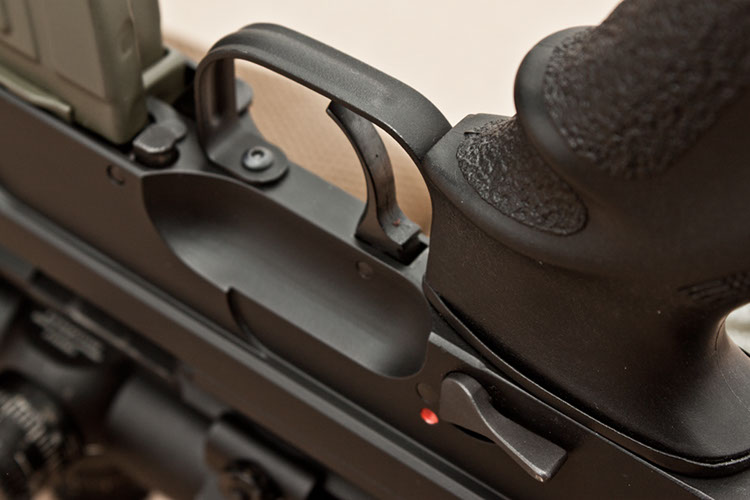
Sellier & Bellot 124gr Czech 1984 Surplus FMJ 3.94 MOA
Barnaul 123gr Non-Corrosive FMJ 3.46 MOA
Hornaday 123gr Z-MAX 3.12 MOA
Polish 1987 Corrosive Surplus 2.39 MOA
Now if you're bolt gun reloader, those numbers might sound unimpressive. But for surplus 7.62x39 through a semi-auto rifle we considered it a heck of an achievement.
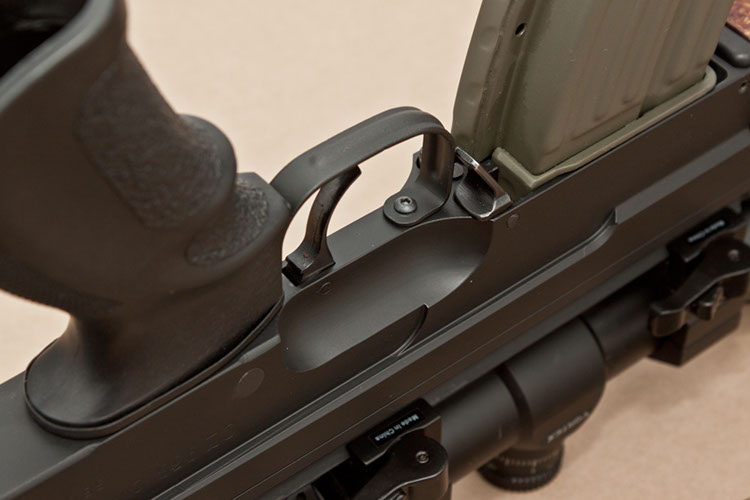
The rifle we tested was a production sample, and the full line will ship with similar original Czech furniture. The laminated wood grips, stocks and handguards have been affectionately named "beaver barf."
Personally we find the beaver-barf a little small, and so traded the pistol grip out for a Fab Defense version. We also traded the military folding stock for a Fab Defense enhanced stock that allowed for a proper cheek weld, QD sling mount, and a decent rubber butt pad. When shooting with powered optics, you don't have the infinite eye-relief and parallax advantages of a red-dot, so suddenly the chin weld that used to work will have you throwing shots when your eye isn't properly aligned behind the scope. We found the straight tube stock and cheek rest made a huge difference to how the rifle shot at 10x.
There are only two lost features in moving from a Cz858 to a Cz958: you can no longer feed rounds off a stripper clip directly into the box magazine. This made life easier for Cold War soldiers receiving crates of ammunition already fit on stripper clips and filling 30 round magazines, but for the average Canadian shooter we don't see it as much of a loss.
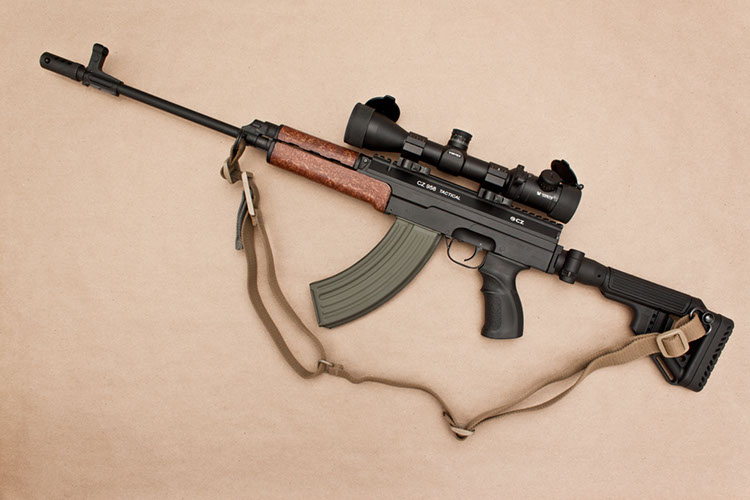
One of the few ergonomics issues we did experience with the Cz958 involves that charging handle. With the addition of the optics rail, and especially with the rings and turrets of a fullsize scope, your access to the charging handle is much more limited than in the old Cz858. Guys who liked to shoot fast had various methods of "slapping" the charging handle with the open face of their left hand, which let you quickly clear a jam, or drop the bolt into battery on a new magazine. But with things becoming tighter around the charging handle, we found we had to use the index and thumb of my right hand to get a reliable grip on the charging handle that wouldn't skin my knuckles.
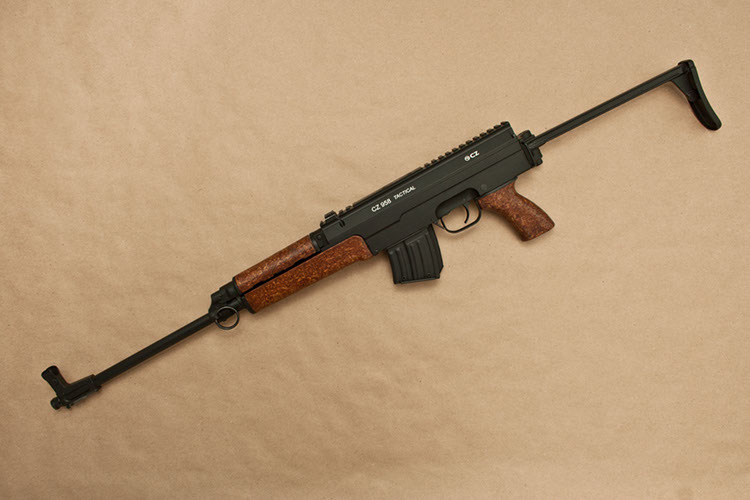
As of this writing, and to the best of our knowledge, the Cz958 has yet to receive an FRT after seven months of inspection. Of course, we cannot say for certain, because that database is not available to the public, and the lab is not exactly forthcoming. With a quick and simple thought experiment we can do our best classify the rifle together right here...
We can recognize that this rifle is based on the Sa.58 platform. Whether you call it a Cz858, Vz58, FSN, Sa.58 etc, there is no doubt that they shared a gas system, magazines etc.
We can look in at the Criminal Code's prohibited weapons order, and see that none of the models and names above are listed. So this rifle isn't prohibited under sections 12(4) or 12(5).
The rifle has a barrel long enough to qualify as non-restricted, and it’s definitely semiautomatic.

We’re pretty confident, then, that the RCMP’s firearms lab is eventually going to classify this rifle as non-restricted, and we’re assuming that the delay relates to backlog, not internal debate about the nature of the 958 itself.
And that’s a good thing, because as soon as this rifle is available, we’re stuffing one in the safe.